British archive television from Network
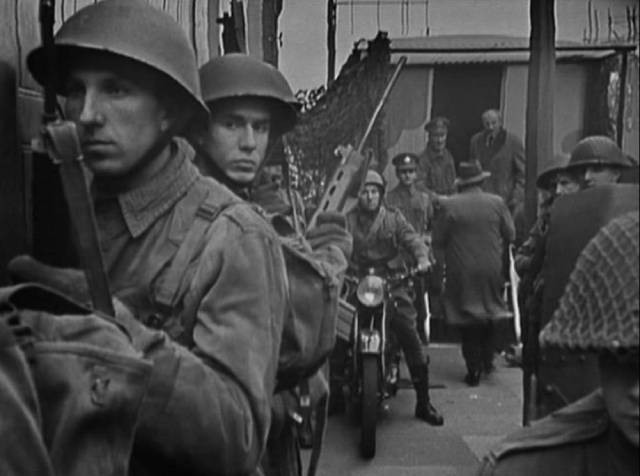
The abrupt disappearance of Network Releasing two years ago was, to say the least, disappointing. Over the preceding twenty-five years, the company had done a great deal to restore a huge number of archival British television shows, eventually branching out to movies with their British Film line which made available numerous minor, forgotten films as well as significant yet long-neglected features like Peter Yates’ Robbery (1967), Val Guest’s 80,000 Suspects (1963) and Michael Winner’s West 11 (also 1963). But despite building a huge catalogue of releases, the company vanished without warning in May 2023, having been put into liquidation six months after the death of founder Tim Beddows. Given the scale of Network’s archive, this was a real blow to the preservation and accessibility of British television and film history.
However, though the company has disappeared, its releases can still be found on-line, though some of them have escalated to “collectible” prices. A few months ago, I somehow stumbled across a couple on eBay (I can no longer recall what led me to them), both from Network’s Forgotten TV Drama line. One, I ordered because of the writer, the other because of one of the directors involved. The latter is a thirteen-episode anthology series from London Weekend Television called The Frighteners (1972-73), which includes an episode written and directed by none other than Mike Hodges, made between Get Carter (1971) and Pulp (1972).
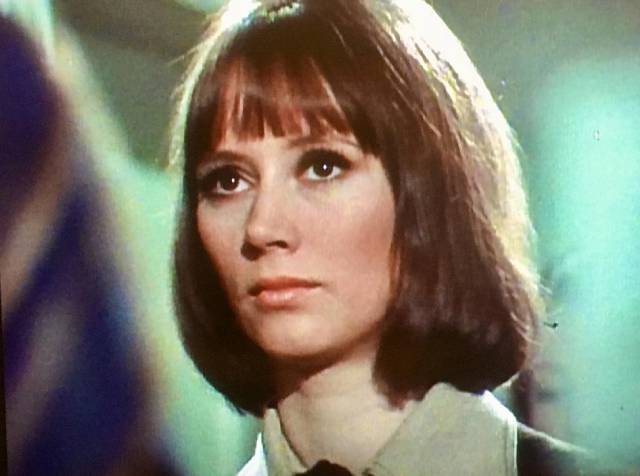
Despite the title, this isn’t an anthology of horror stories; “the frighteners” is a British underworld slang term for the intimidation of people and here the stories are rooted in psychological suspense loaded with menace and paranoia. At 26-minutes per episode, these are tightly constructed and for the most part tense with intimations of madness and violence, many with a narrative twist which alters the viewer’s understanding of character motives. It’s a fairly grim collection, with impressive casts and excellent production values given the limited scale afforded by the half-hour format.
The Hodges episode, “The Manipulators”, alternates between a lecture on Pavlovian conditioning techniques and a pair of men surveilling a young couple in their apartment, observing a marriage disintegrating under financial stress and the strain of a new-born baby. One of the observers becomes increasingly distraught as the scene across the street escalates to a horrific act of violence, only to discover that he is himself the subject of an experiment. Hodges had decided to explore the implications of violence on an observer after seeing the effect Get Carter had on its audience.
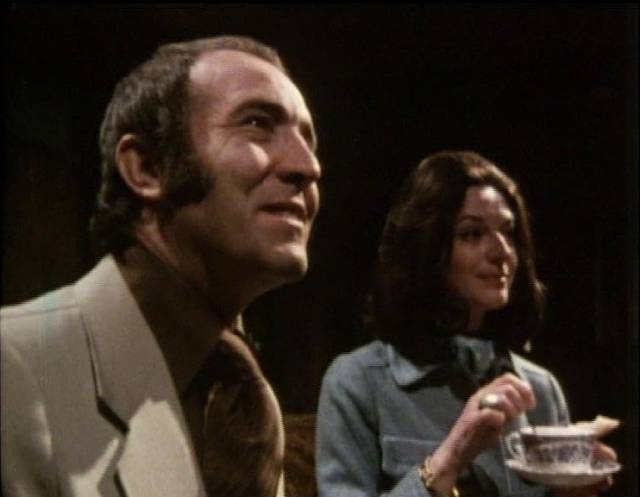
Another highlight is “Bed and Breakfast” (dir. David Askey) in which a couple pull up to a remote country house at night, nail a board to a tree beside the gate declaring the house to be a bed-and-breakfast, then wake the elderly couple inside and demand a room for the night. This strange home invasion set-up becomes increasingly tense thanks to Ian Hendry’s aggressively intimidating performance which gradually strips away the old couple’s defenses – uncertainty makes it impossible for them to sustain the veneer of superficial social normality and the intruders eventually bring to the surface a dark secret which explains why the couple have been targeted.
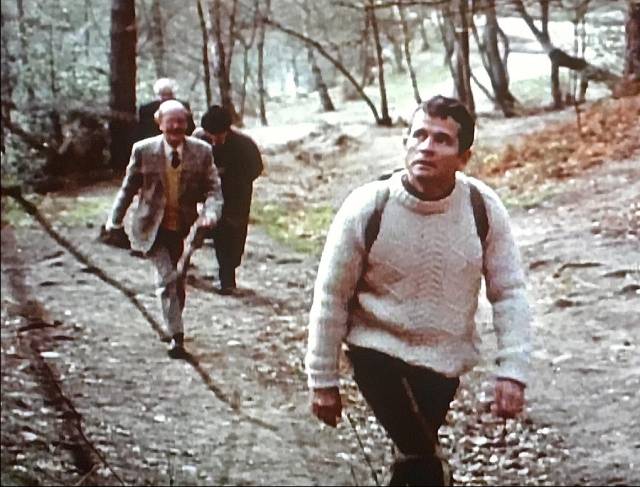
More uncomfortable is “The Treat” (dir. Gareth Davies), in which a male nurse (Ian Holm) takes three veterans from an old folks’ home out for a day in the country. On the drive, they amuse themselves with some vague digs at the nurse, but things escalate as they play games on their walk until those digs become an overt assault on the nurse because they’ve discovered that he’s gay – the viciousness of their homophobia is unsettling.
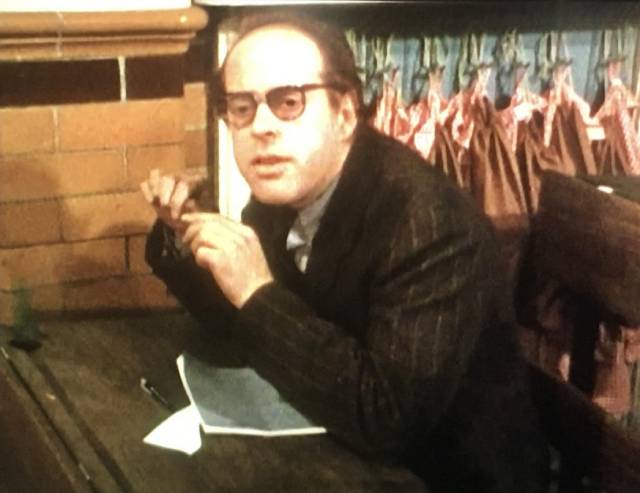
The most concentrated and claustrophobic episode is “The Classroom” (dir. Graham Evans), written by William Trevor, one of the finest writers of short stories (and novels) of the past sixty years. Preparing to leave her classroom for the last time, a retiring teacher (Patience Collier) finds herself locked in with an embittered man (Clive Swift) who confronts her about her demeaning treatment of him as a child, attributing everything that has gone wrong with his life to her abuse. She has to use all her skills to navigate the menacing situation, while the viewer must discern whose memories are the more reliable – is the man deluded, or is the beloved teacher actually a monster?
While the series, like all anthologies, is uneven, the quality overall is high and the tone surprisingly dark. The casts feature numerous familiar faces who give the episodes dramatic impact – Tom Bell, Jennie Linden, Victor Maddern, Jack Hedley, Robert Urquhart, Geoffrey Bayldon, Joe Lynch, John Thaw… The Frighteners is one of those oddities which appeared briefly and quickly disappeared, and would probably have remained forgotten if not for Network’s diligent effort to unearth such material.
*
Nigel Kneale
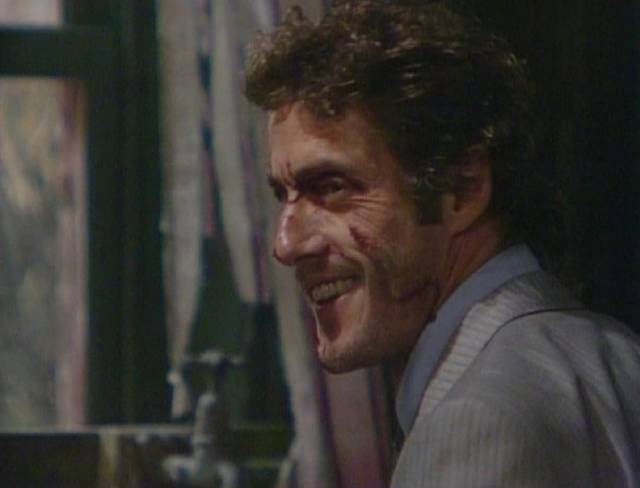
I’ve been a fan of Nigel Kneale ever since I saw Hammer’s feature version of Quatermass 2 (1957) on our small black-and-white television back in the mid-’60s. I even read the Penguin paperback editions of the scripts of his three Quatermass serials when I was ten or eleven, drawn by the several pages of stills from the live broadcasts inserted into the books. Over the ensuing decades I encountered more of his work, but inevitably everything was somewhat overshadowed by Quatermass, a creation which not only transformed British television drama in the ’50s, but also contributed to making science fiction a genre which could be taken seriously by adults. Initially, I could only see these stories in Hammer’s adaptations, but the scripts were so much richer and more complex. It was a long time before I got to see the serials themselves (only two episodes of The Quatermass Experiment have survived, but both Quatermass II and Quatermass and the Pit are complete and readily available on disk) and could be impressed by how they pushed the limits of live television drama in radical ways.
Unfortunately, since Kneale worked mostly in television in the ’50s and ’60s, much of his work has disappeared (the BBC notoriously would wipe tapes clean so they could be reused once it was decided that a show had no more value) – The Creature (1955) is gone, though again Hammer (and director Val Guest) made a decent movie out of it in 1957, while the legendary The Road (1963) was revived in 2018 as a radio play. It’s probably futile to hope that these might yet resurface, but since his 1954 adaptation of Nineteen Eighty-Four, The Year of the Sex Olympics (1968) and The Stone Tape (1972) did eventually appear in some form, perhaps some of the lost will eventually be found.
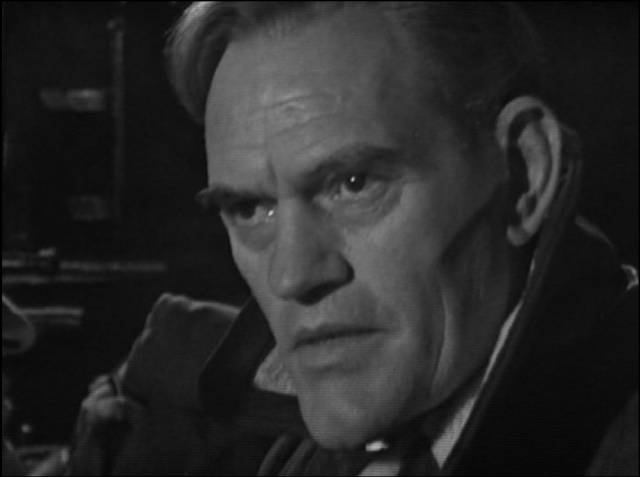
While Quatermass looms so large, Kneale’s range extended in many other directions. In addition to published versions of a number of his television scripts, there’s an excellent short story collection from 1949 called Tomato Cain and Other Stories (I still have a copy of the 1961 paperback reprint) and his 1979 novel version of the fourth Quatermass serial made by Thames Television. Having written a number of literary adaptations for the BBC in the ’50s, he branched out into theatrical features, beginning with Look Back in Anger (1959) and continuing with The Entertainer (1960), Damn the Defiant! (1962), First Men in the Moon (1964) and The Witches (1966), while still occasionally working on television dramas, most notably with Murrain (1975), the six-episode Beasts (1976), Quatermass (1979), the odd sit-com misfire Kinvig (1981) and the haunting The Woman in Black (1989).
His range is on full display in Network’s The Crunch … and Other Stories, a collection of three TV dramas spanning two decades. The Crunch (1964) is a one-hour show originally made for Associated Television’s Studio ’64 anthology series which addresses some major political issues of the time – particularly nuclear anxiety and the fall-out from the dissolution of the Empire. The leader of Makang, a former colony in Asia, has smuggled a nuclear device into the newly independent country’s embassy in London and threatens to detonate it unless the British government pays massive compensation for the exploitation and abuse his people had suffered under colonial rule. With the street outside the embassy sealed off, the police, military and politicians try to deal with the situation, unsure whether the bomb will be set off regardless of how they respond to the ransom demands – the leader has been shaped by a life of anger and resentment against his nation’s colonial masters and may want revenge more than compensation.
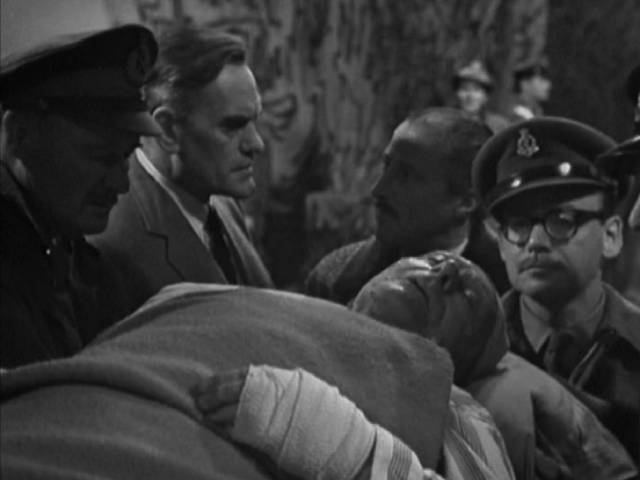
The tense conflicts among the British factions outside are reflected by disagreements among the people inside the embassy. British actors in racial drag probably didn’t seem as problematic in 1964 as they do now, but Kneale makes a serious effort to present the very different views of politics and religion between the British and the people from Makang, with elements on both sides either pushing for violent solutions or trying to resolve the conflict peacefully. The Prime Minister as played by Harry Andrews finds himself trying to hold back an aggressive military led by a General played by Anthony Bushell, who had been Colonel Breen in the original Quatermass and the Pit serial (1958-59), while appealing to the more moderate Makang ambassador (Maxell Shaw), who himself is trying to rein in the increasingly unhinged behaviour of his President (Wolfe Morris). Despite the budgetary and technical limitations of a one-hour television production, The Crunch, directed by Michael Elliott (who would work with Kneale again four years later on The Year of the Sex Olympics), is a worthy and serious contribution to the paranoid political thriller genre which flourished during the Cold War.
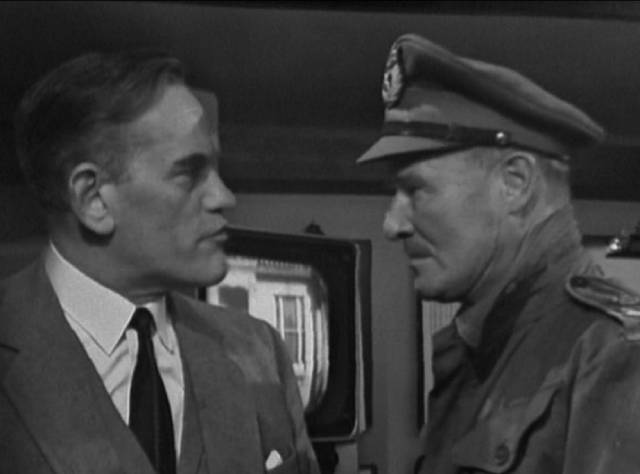
Kneale ended the ’70s by revisiting his signature character, bringing him up to date in a story about social decay and New Age delusions. Turned down by the BBC, the four-part Quatermass serial, directed by Piers Haggard, with John Mills as an aging, embittered protagonist, was produced by Euston Films for Thames Television. Made just before Margaret Thatcher took a wrecking ball to the U.K., it depicted a near future of economic collapse, civil unrest, and an unrealistic quest for transcendent ways to escape from a society which had become untenable. Following this, he wrote the awkward Kinvig, then had a very frustrating Hollywood experience when his fan John Carpenter commissioned him to take the Halloween franchise in a new direction. Although there are traces of Kneale’s interest in the intersection of science and the occult in Halloween III: Season of the Witch (1982), the script was taken away and rewritten by director Tommy Lee Wallace, to almost no one’s satisfaction. Though the movie isn’t without interest, Kneale had his name taken off the credits.
After that, he returned exclusively to television, with two major adaptations – a feature based on Susan Hill’s ghost story The Woman in Black (1989) and a four-part serial based on Kingsley Amis’s novel Stanley and the Women (1991) – plus episodes of a pair of long-running series, Sharpe (1995) and Kavanagh QC (1997). His final original scripts were a pair of one-hour programs in the mid-’80s, both of which focused on current social concerns without any fantasy elements.
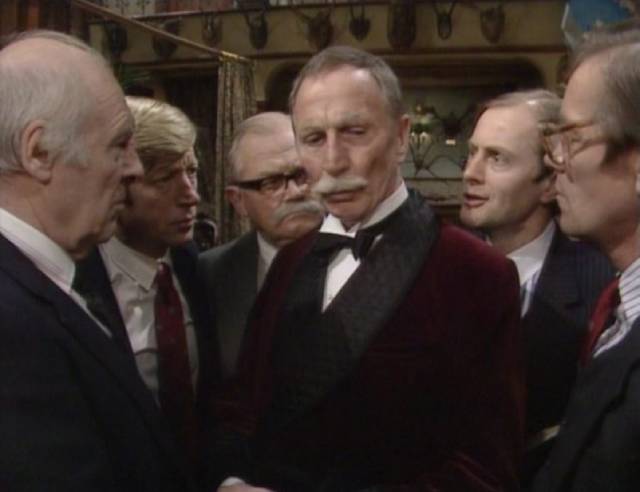
Ladies’ Night (1986) is a rare Kneale satirical comedy. The Hunters Club is a stuffy institution populated by aging men who adhere to outmoded principles, aggressively resistant to change. But the membership is dwindling and finances are in a dire state. One solution, to allow members to bring their wives for dinner on Monday nights, is so offensive to Colonel Waley (Alfred Burke) that the mere sight of a woman walking in the door sends him into an apoplectic rage. The fact that the women who arrive on this particular Monday evening simply don’t understand all the arcane rules and restrictions – and thus repeatedly violate protocols – just makes matters worse. Worst of all is Evelyn Tripp (Fiona Walker) who rather vocally reveals her amused contempt for the members’ absurd traditions. Tensions accumulate in the bar and the dining room and eventually someone ends up dead and the members, under the Colonel’s influence, try to figure out how to dispose of the body. Kneale deftly skewers the men’s attempts to cling to ancient privilege in changing times, their desire to hold back the tide of social change inevitably doomed to failure, and the excellent cast under Herbert Wise’s direction find just the right comic tone.
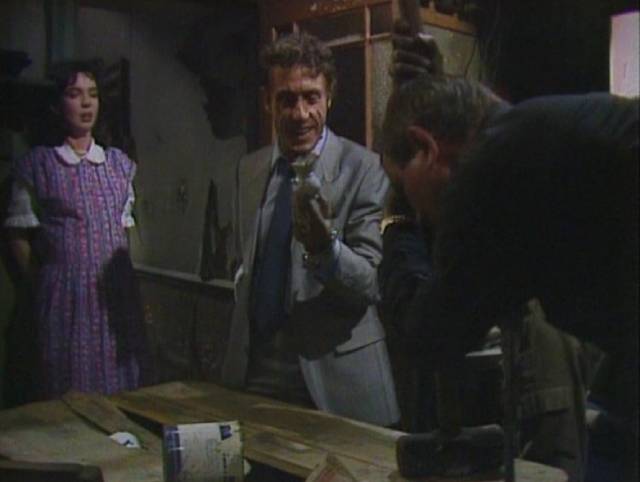
The third program on Network’s Kneale disk is Gentry (1987) which, as the title suggests, deals with issues of class and urban development. Solicitor Gerald (Duncan Preston) takes his wife Susannah (Phoebe Nicholls) to look at a big house on a run-down East End street; it’s a great investment, he says, but she isn’t very impressed and is quite displeased to learn that he’s already bought it for £100,000, something which has involved some dodgy financial activity with his firm’s money. He insists that once the house is renovated, there’ll be more than enough profit to make things right. But then they discover the body of the man who sold it to him in a bathtub full of filthy water. And if that wasn’t bad enough, they’re soon visited by three men who turn out to be East End criminals led by Colin (Roger Daltrey).
Somewhere is the house the haul from a robbery has been stashed and the guy upstairs died before telling them where the loot is hidden. The layers of tension accumulate as the intruders begin to tear the house apart; Gerald’s middle-class corruption contrasts with Colin’s criminal activity rooted in an impoverished childhood, while Susannah has some empathy for Colin’s nostalgia for the old neighbourhood which, having fallen into decay, is now being transformed by gentrification which is erasing all the physical remnants of his memories. Kneale’s well-drawn characters and the excellent cast under Roy Battersby’s direction find sympathy for both sides of the class divide as they face inexorable social changes which demand that they adapt even as they risk losing their own sense of identity.
*
These two releases are a reminder of a time before “prestige television” produced ever bigger, more elaborate and costly shows; modestly scaled, often with themes pertinent to the moment of their making, created by writers, directors and actors for whom the medium was a craft – one which they took very seriously and without pretension – Kneale’s three plays and the thirteen episodes of The Frighteners are satisfying entertainments which manage to say something about human nature and the times in which they were made.
Comments